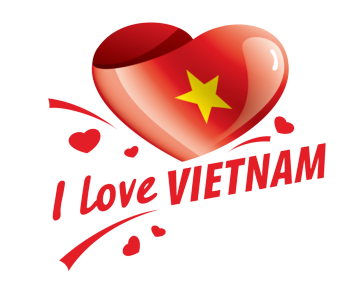If you have been to Hà Giang and don’t know Khau Vai Love Market, then you probably haven’t really been to Hà Giang. But what is Khau Vai Love Market? What is sold at Khau Vai Love Market? What makes Khau Vai Love Market so attractive? Could it be as the name suggests, a “love market”? Let’s explore Khau Vai Love Market together.
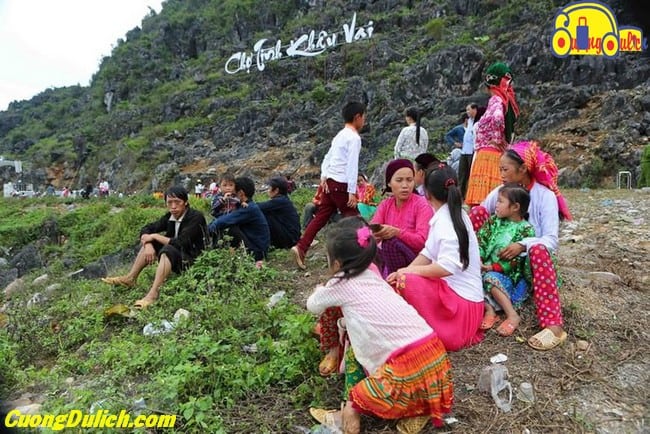
What is Khau Vai Love Market?
Khau Vai Love Market, also known as Phong Luu Market, has a history of nearly 100 years. Khau Vai Love Market originates from a beautiful yet sad love story. Khau Vai Love Market is the most famous “extramarital affair” market in Hà Giang. It is an occasion for people to reunite after a year (or even many years) of separation, mainly for those who have faced obstacles in their love but truly care for each other. Due to various reasons, they couldn’t be together, and now each person has their own destiny. On this day, they meet here to share their feelings, update each other on their lives, and reminisce about past emotions.
When does Khau Vai Love Market take place?
Khau Vai Love Market, also known as Phong Luu Market, has a history of 100 years. According to some documents, the market has been around since 1919. Even the oldest people in the village don’t know exactly when the market started, they just know it has been there since ancient times. The market is located in Khau Vai commune, Meo Vac district, Hà Giang, and it only takes place once a year on the 27th day of the 3rd lunar month.
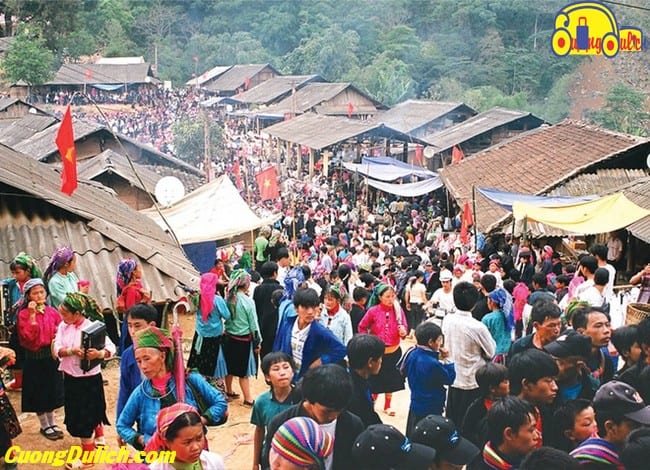
What is special about Khau Vai Love Market?
This is a place where couples come together after years of separation, couples with love stories full of obstacles, despite their true love, for some reason they couldn’t be together, had to go in different directions, building their own lives. The market opens for them to reunite, relive beautiful memories of the past, share about their current lives, worries, or joys. There are also married couples who come to the market together, but when they arrive, each person goes to find their own friend without any jealousy. They respect each other, respect each other’s friends. For them, it is a sacred and noble act, a duty and responsibility towards their other half.
The legend and origin of Khau Vai Love Market
The legend of the love market originates from the story of a man named Ba and a woman named Ut. The story goes: In the past, in the Khau Vai region, there was a poor Nung farmer family with 3 sons, all 3 sons were strong, handsome, skilled in farming and hunting. The youngest son had a beautiful singing voice and was skilled at playing the flute. Despite being poor, he was very kind-hearted and always ready to help those in need. Therefore, the villagers affectionately called him “Ba”, his flute and singing voice captivated all the young girls in the village.

The chief’s family of the Giay village had a beautiful youngest daughter who had just reached the age of enjoying herself by the stream. She had a beautiful singing voice, like a nightingale… As she grew older, she became even more stunning, like a fairy. Many wealthy young men from the surrounding villages wanted to marry her, but she was not interested because her heart was captivated by the flute of a young man named Ba. Her singing voice had blended with Ba’s flute at some point, and whenever she heard his flute, she felt a strong desire to run to him. For Ba, every time he heard her singing, his heart fluttered with excitement.
A beautiful love story facing obstacles
The two were in love, but Ut’s family did not approve because Ba was poor and from a different ethnic group with different customs and traditions; a Nung man could not marry a Giay girl.
They decided to elope and live in a cave in Khau Vai. Ut’s family brought guns and bows to Ba’s house, cursing and taking Ut back to the forest. Ba’s family also came with sticks, guns, and knives to confront Ut’s family.
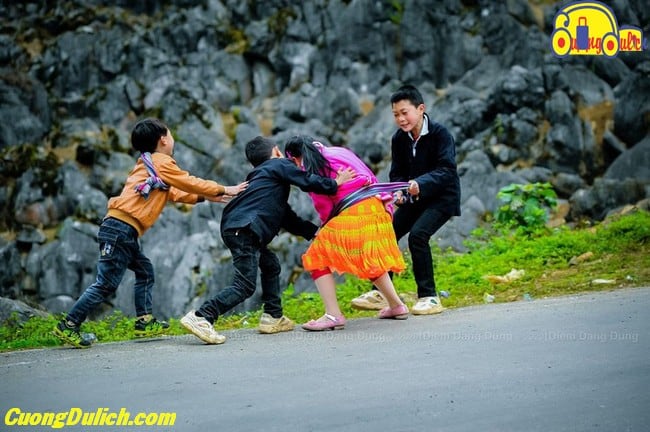
Looking down from the mountain cave, witnessing the bloodshed, the fighting between two families. Love for their parents, love for the people of the two villages suddenly turned into hatred towards each other just because of their own love, so the young man and the girl parted ways back to their villages, swearing to become husband and wife in the next life. The day they parted was on the 27th of March, and the people in the region consider that day as a market day.
When the couple parted ways, they made a blood oath: Even though they couldn’t be together, every year on the 27th of March they would meet at Khau Vai to sing for each other, sharing their secrets and feelings kept in their hearts throughout the year apart. They would share their emotions, sing all night, and then return to their daily lives the next day.
Khau Vai Love Market becomes a time for lovers to find each other
On the last day of their lives, they come back to each other. They find the tree in the forest and sit by the rock where they made their vows long ago, holding each other tightly as they enter eternity together. They depart on the 27th of March – the day they decided to part ways each year. The villagers have built two shrines, “Bà Shrine” and “Ông Shrine,” right where they passed away to commemorate the love of Khau Vai.
Therefore, the Khau Vai Love Market has become a place where people come together every year, after a year (or even many years) of separation, mainly for those who have faced obstacles in their love, truly loving each other, but for some reason couldn’t be together. On this day, they meet here to confide in each other, share about their individual lives, and reminisce about past feelings.
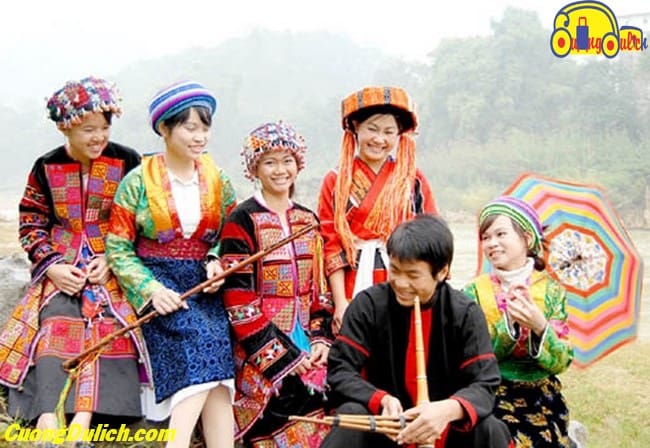
The Khau Vai Love Market Festival Today
The Khau Vai Love Market Festival is an event organized to preserve and promote the traditional cultural values of the ethnic groups in Ha Giang province, showcasing the cultural identity of the people in the Global Geopark Dong Van Karst Plateau, contributing to the construction and development of social, family, and love standards, embodying the high humanistic traditional values of the people.
Visiting the Dong Van Karst Plateau in Ha Giang during the Khau Vai Love Market Festival will surely provide new and comprehensive experiences of the landscape and way of life of the Mong ethnic people in Ha Giang.
